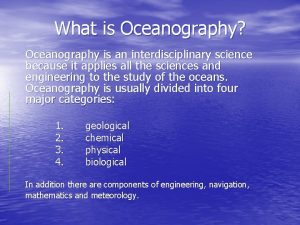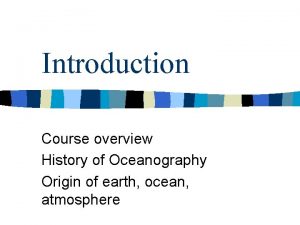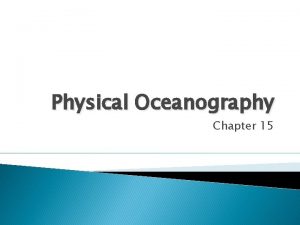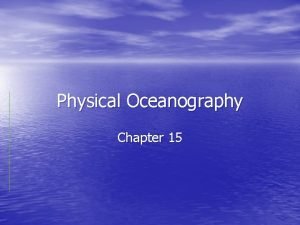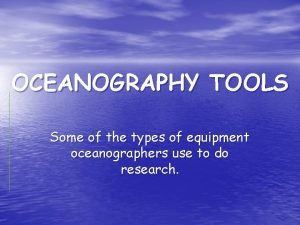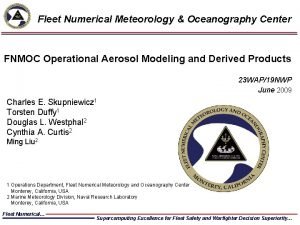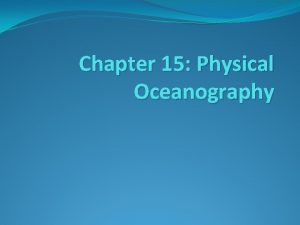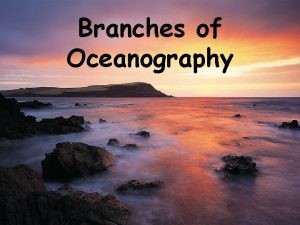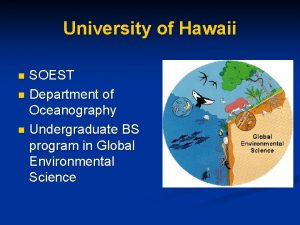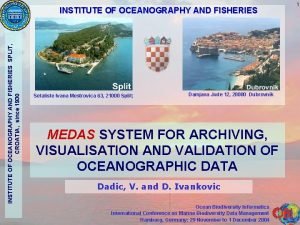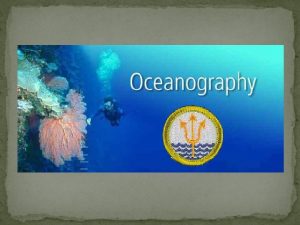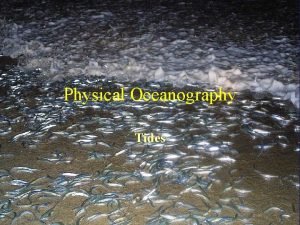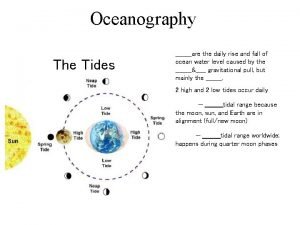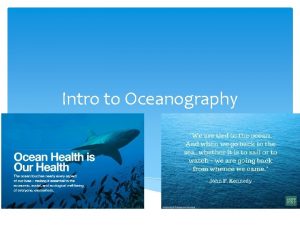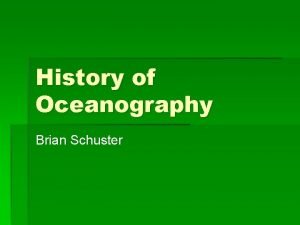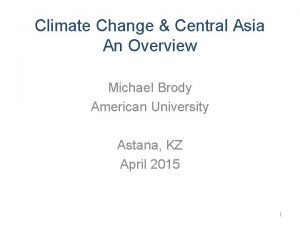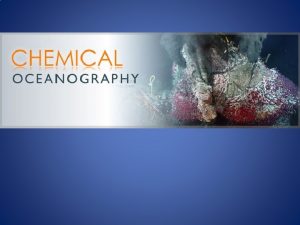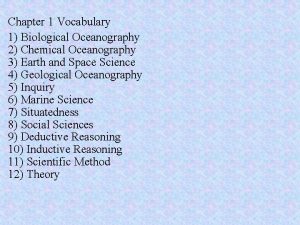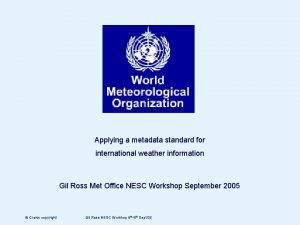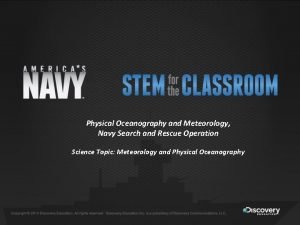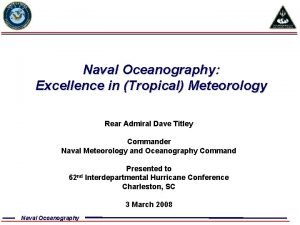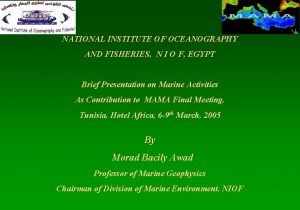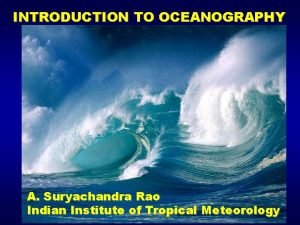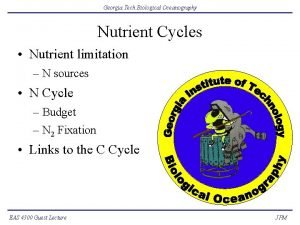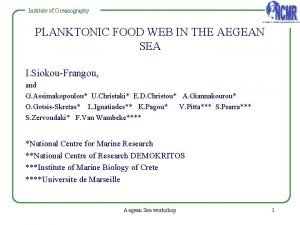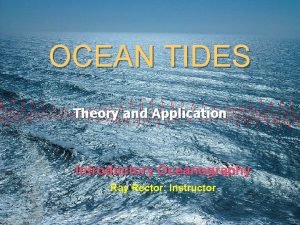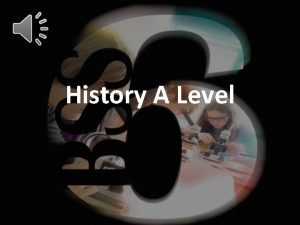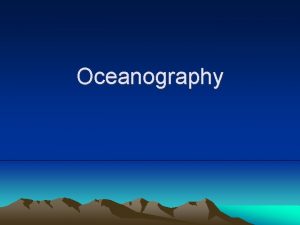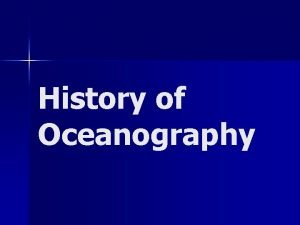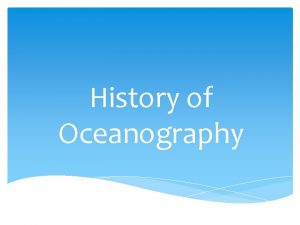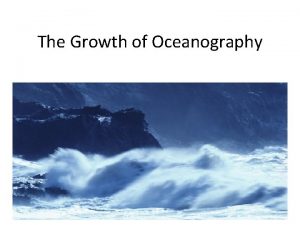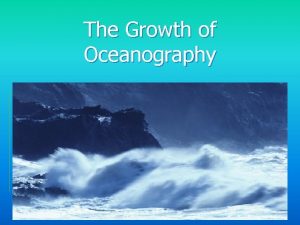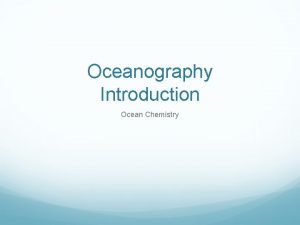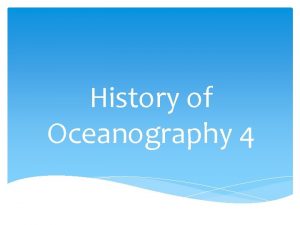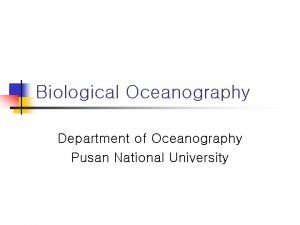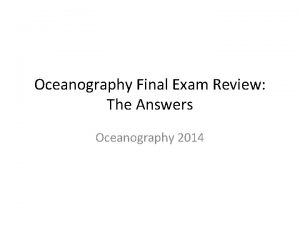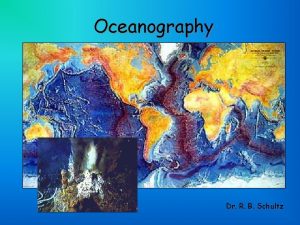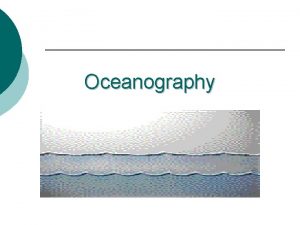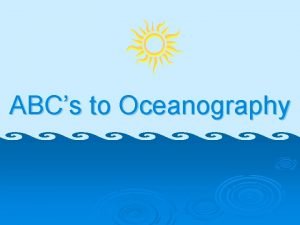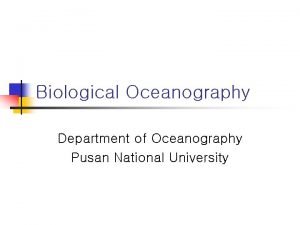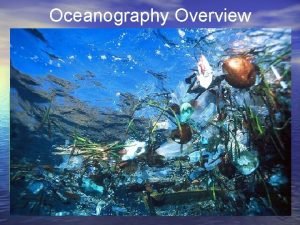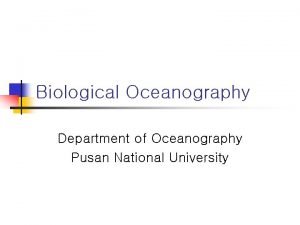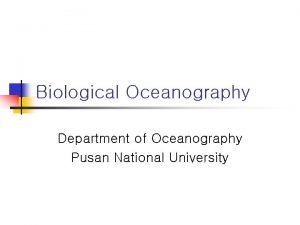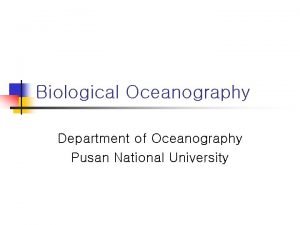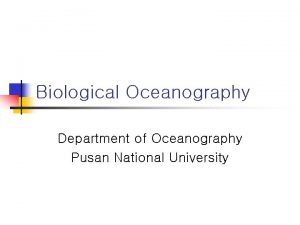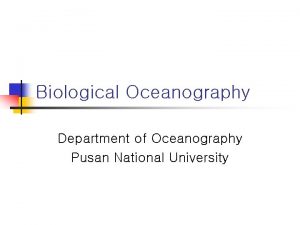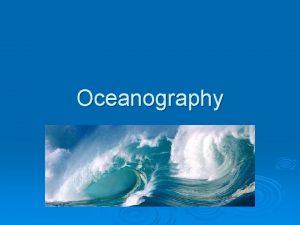History of Oceanography Why Study The History of




































- Slides: 36

History of Oceanography

Why Study The History of Oceanography? • 1. It’s key to understanding how the oceans have shaped human society and how they may shape the future. • 2. Oceanography’s past helps you understand why and how people apply marine sciences today. • 3. It’s interesting! It grew out of humanity’s desire to explore.

History of Oceanography: 6 Stages 1. Ancient Uses and Explorations: (5, 000 B. C. to 799 A. D. ) Don’t Copy!! 2. The Middle Ages: (800 to 1399) 3. European Voyages of Discovery: (1400 -1699) 4. The Birth of Marine Science: (1700 -1899) 5. 20 th Century Marine Science: (1900 -1999) 6. Modern Marine Science: (2000 – Present)

Timeline *Hold Paper Horizontally • Each person will be responsible for showcasing 1 of the main events in the history of Oceanography. • Front – A hand drawn picture to depict the event AND a date (a year is fine if you can’t be more specific) • Back – VERY NEAT description explaining the discovery or event (min 6 sentences). How did it contribute to the history of oceanography? – Cite your sources in MLA Format!!!

Stage 1: Ancient Uses and Explorations 5, 000 B. C. to 799 A. D.

Ancient Uses and Explorations • 3 primary reasons for early civilizations to interact with the ocean: 1. Food 2. Trade 3. Exploration

Ancient Uses and Explorations • Earliest recorded sea voyage – Egyptians, 3200 B. C. • Ancient Phoenicians established 1 st trade routes through the Mediterranean, 1200 B. C. – The north star was once called the Phoenician star. It’s the earlier record of using the North Star for navigation.

Ancient Uses and Explorations • The Polynesians were the first group to sail across the open ocean as opposed to staying close to shore. – Homemade canoes Hawaii to Tahiti : 2, 000 miles

Ancient Uses and Explorations • Ancient Greeks: First to use mathematical principles and develop sophisticated maps for seafaring – Greek Pytheas • Used the North Star for navigation and predicted tides in the Atlantic Ocean based on phases of the moon. – Greek Eratosthenes • Calculated Earth’s circumference and invented the first latitude/longitude system – Greek Herodotus • Made one of the first known maps

What is Latitude and Longitude? • Helps determine specific locations on the Earth’s surface • Latitude = Across • Longitude = Over

Stage 2: The Middle Ages 800 A. D. to 1399

The Middle Ages • The “Dark Ages” (intellectual darkness) – Myths replaced knowledge • Example: The Greeks knew the Earth was round but the primary belief in the Middle Ages was that the Earth was flat – Viking Explorations • A warming global climate freed the North Atlantic of ice allowing the Vikings to explore westward

• Chinese Explorations and Discoveries – Responsible for making magnetic compass

Stage 3: European Voyages of Discovery 1400 to 1699

Renaissance (Latin: “to be born again”) – New interest in ocean exploration • Motives: Economics, politics, religion – Bartholomeu Dias (1487) • Completed first voyage around Cape of Good Hope

Exploration of New World – Columbus, 1492 • 4 Voyages to find a route to Asia from Europe

– Vespucci: recognized South America as new continent – Balboa: Crossed the isthmus of Panama and discovered the Pacific Ocean • Renewed hope that you could get to Asia by sailing west. – Magellan, 1519 • Finally! Someone sails around the world!

*Magellan’s Voyage • Voyage started with 5 ships and 260 men • 1 Ship and 18 men returned • The rest died from disease and accidents • Magellan himself died in the Philippines fighting with islanders


Stage 4: The Birth of Marine Science 1700 to 1899

Captain James Cook – Launched expeditions with science and exploration as the only goals – First to use a Chronometer • An accurate clock that determines longitude at sea (could determine exact location) – Discovered Australia

• The United States Exploring Expedition – Sailed through the southern ocean for 4 years • Discovered Antarctica • Gathered specimens • Made maps • Mathew Maury – Father of Physical Oceanography • Studied currents and other physical aspects of the sea

Darwin – H. M. S Beagle, 1831 – Explored Galapagos Islands – Explained formation of coral reefs – Proposed theory of natural selection • The process by which organisms with favorable traits tend to live longer and reproduce more.

The Challenger Expedition – First expedition devoted entirely to Marine Science – (1872) sailed 4 years – Gathered physical, geological, chemical, and biological data at regular intervals across the ocean

Data Collection (23 yrs to examine all the info) – Discovered marine organisms in the deep ocean (people assumed nothing lived there) – Discovered Mid-Atlantic Ridge and Marianas Trench – Catalogued and identified 4, 717 new species

Industrial Revolution • Steam engines and iron ships • Submarines

th 20 Stage 5: Century Marine Science 1900 - 1999

3 Important Expeditions Meteor: Mapped Atlantic seafloor with echo-sounding technology Atlantis: First ship specifically designed for ocean studies H. M. S. Challenger II: Found deepest part of ocean within the Marianas Trench (Challenger Deep)

Submersibles – Bathysphere • Beebe and Barton Bathys = deep – Bathyscaphe Scaphe = boat • Trieste – first submersible to descend to bottom of Challenger Deep – Deep-diving submersible

Scuba Self Contained Underwater Breathing Apparatus

Hydrothermal Vents • An opening in the seafloor where heated, mineralrich water flows out. • Form at locations where seawater meets magma

The Titanic • Dr. Bob Ballard and his team discover the Titanic south of Newfoundland in 1985 (73 years after it sank in the Atlantic) at a depth of 12, 000 ft.

Stage 6: Modern Marine Science 2000 - Present

Census of Marine Life • A 10 year investigation of diversity, distribution and abundance of marine life. • A DECADE OF DISCOVERY 2, 700 scientists 80+ nations 540 expeditions US$ 650 million 2, 600+ scientific publications 6, 000+ potential new species 30 million distribution records and counting

1 st Solo Dive to the Mariana Trench • James Cameron and his team spent 7 years researching, designing and testing a submersible that could survive the pressure at 36, 000 feet. – Deepsea Challenger – March 26, 2012

History of Oceanography: 5 Stages 1. Ancient Uses and Explorations: (5, 000 B. C. to 799 A. D. ) Don’t copy!! 2. The Middle Ages: (800 to 1399) 3. European Voyages of Discovery: (1400 -1699) 4. The Birth of Marine Science: (1700 -1899) 5. 20 th Century Marine Science: (1900 -1999) 6. Modern Marine Science: (2000 -Present)
 Why why why why
Why why why why Why is oceanography an interdisciplinary science
Why is oceanography an interdisciplinary science History of oceanography
History of oceanography Dont ask
Dont ask Chapter 15 physical oceanography
Chapter 15 physical oceanography Chapter 15 physical oceanography
Chapter 15 physical oceanography Dip net oceanography
Dip net oceanography Fnmoc
Fnmoc Chapter 15 physical oceanography
Chapter 15 physical oceanography Branches of oceanography
Branches of oceanography University of hawaii oceanography
University of hawaii oceanography сплит institute of oceanography and fisheries
сплит institute of oceanography and fisheries Four branches of oceanography
Four branches of oceanography Essentials of oceanography
Essentials of oceanography Oceanography
Oceanography Kinds of tides
Kinds of tides Chemistry oceanography
Chemistry oceanography Polynesians oceanography
Polynesians oceanography Scripps institute of oceanography
Scripps institute of oceanography Chemistry oceanography
Chemistry oceanography Chemical oceanography definition
Chemical oceanography definition Chemistry oceanography
Chemistry oceanography Search by image
Search by image Oceanography
Oceanography Institute of oceanography and fisheries
Institute of oceanography and fisheries Oceanography
Oceanography Oceanography
Oceanography Oceanography
Oceanography Neap tide spring tide
Neap tide spring tide Why study history a level
Why study history a level Hình ảnh bộ gõ cơ thể búng tay
Hình ảnh bộ gõ cơ thể búng tay Slidetodoc
Slidetodoc Bổ thể
Bổ thể Tỉ lệ cơ thể trẻ em
Tỉ lệ cơ thể trẻ em Gấu đi như thế nào
Gấu đi như thế nào Chụp tư thế worms-breton
Chụp tư thế worms-breton Hát lên người ơi
Hát lên người ơi

